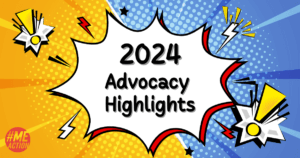Palo Alto Online recently published a series of three articles highlighting the struggles faced by Mylagic Encephalomyelitis (Chronic Fatigue Syndrome) patients and their caregivers. The series centers around Whitney Dafoe and his father’s research work. All three articles are excerpted and briefly summarized below.
Chronic fatigue syndrome saps its victims, but new research may find the cause
Victims offer first-hand accounts of debilitating illness
Palo Alto Online’s series on Myalgic Encephalomyelitis/Chronic Fatigue Syndrome highlights the experiences of several different patients with ME/CFS as well as the latest scientific research efforts to find a cause and treatments.
The patients featured in this article are Whitney Dafoe, Stephen Shimshock, and Susan Kreutzer.
Whitney Dafoe
Dafoe is the most severely affected of those included in the article, completely bedridden and suffering from a myriad of symptoms.
Dafoe’s disease has progressed to the point that he cannot talk, read or use the Internet. His joint pain became so severe some time ago that he could no longer walk and needed to use a wheel chair. Now he rarely gets out of bed. On a good day, he’ll show his gratitude by pointing to his heart, his mother said.
Like many patients with ME/CFS, he was healthy and active and living a full, vibrant life before becoming suddenly ill and never recovering. The article quotes Dr Kogelnik talking about Dafoe’s story with ME/CFS:
He had in some ways a very typical story. He was a young guy, successful, in-the-prime-of-his-life kind of person, and very positive but had all of a sudden been hit after a brief acute illness, and he hadn’t really recovered from it. And he continued to kind of not recover from it for months and months; and months became years, and he had no reason functionally to not be healthy
Dafoe’s father is Ronald Davis, a geneticist and renowned researcher who is now working tirelessly to try to understand what is happening to his son.
As his son continues to drift further away, Davis is trying to ramp up research into the origins of chronic fatigue. He has formed the Chronic Fatigue Syndrome Research Center at Stanford and is the director of the Open Medicine Foundation science advisory board. The latter has formed a research consortium, the End ME/CFS Project, to study the disease’s origins and the commonalities between severely ill patients.
Davis’ research efforts are discussed in more depth in the sister article, Unraveling the Mystery of Chronic Fatigue Syndrome.
Stephen Shimshock
Shimshock has a similar-but-different story than Dafoe. He was also an active and successful young man when he fell ill with a viral infection and never recovered fully. Unlike Dafoe, he is not as severely affected. But it’s sobering to understand how limited his activities have to be in order to maintain even this level of functioning.
It’s like having an envelope with a particular quantity of energy credits that, when depleted, take a long time to refill.
“A safe day is scheduling one hour of activity outside of the house or interacting with people,” he said.
He shares his gratitude for his friends and family’s support through his illness as well as the incredible mental struggle that many patients face because of the isolation they experience.
Susan Kreutzer
Kreutzer’s profile is shorter than the other patients featured in the article but offers some interesting points. She did extremely well on a high dose of synthetic thyroid hormones but was unable to continue the treatment. Of the three, she had the best response to antiviral drug therapy. While the treatment wasn’t significantly helpful for either Dafoe or Shimshock, Kreutzer describes a Lazarus-like recovery.
Ten weeks to the day after she started anti-viral treatment, she felt significantly better. One day she had no energy to stand up and get her hands above her head, and then the medicine kicked in.
“You’ve just given me oxygen. It’s like I rise from the dead. Overnight, I’m like, ‘OK, who wants to go jogging?'” she said.
Unraveling the mystery of chronic fatigue syndrome
Scientists take small steps toward understanding a devastating disease
Whitney Dafoe, featured in the first article happens to be the son of Ronald Davis. Davis is a world-renowned geneticist who worked on the human genome project. Due to his son’s illness, he has turned his focus to the study of ME/CFS. Davis is on the board of the Open Medicine Foundation and will be involved in their upcoming Severely Ill Big Data Study Dafoe, as you will remember, is very severely ill and is undoubtedly in the category of severely ill patients that the upcoming OMF research study wants to include.
Davis and his team plan to use technologies developed for the Human Genome Project to sequence the entire genome of chronic fatigue patients, including 1,600 mitochondrial genes, more than 20,000 other genes and control regions that regulate genes. They hope to identify proteins that are found in immune cells, blood and spinal fluid; search for infectious agents in blood, bone marrow, spinal fluid and saliva and changes to gastrointestinal tract flora; and find evidence of autoimmune responses. The research could reveal DNA sequences that are altered in chronic fatigue patients.
The study hopes to find biomarkers for ME/CFS. If found, these biomarkers will almost assuredly lay the groundwork for diagnostic test or effective treatments.
Whitney Dafoe: ‘When I crash’
Whitney Dafoe describes in his own words what it’s like to crash from over-exertion. Whitney is no longer able to speak and currently not even able to communicate in so many words. But this article he wrote last year gives us all a glimpse into what he experiences every day.
I get a rush of some kind, not sure what chemical it is. The best way I can describe it is the feeling of ’embarrassed/ashamed surprise/panic.’ Like if you stood up to a presentation in class (at school) and realized you had no pants on.
I mentioned feeling desperate, but that may just be a reaction to the fact I know I was now going to get worse, and today would be another day in which I didn’t get any better despite my profound effort to avoid crashing and sacrifice all day.

Bonus: Mini-documentary
Palo Alto Online also produced a mini documentary titled Invisible Illness – Stories of Chronic Fatigue Syndrome
This mini documentary reveals 3 stories of people who have been impacted by Chronic Fatigue Syndrome – a little known disease that affects roughly 836,000-2.5 million people in the U.S. and receives little research funding. They share emotions of treating loved ones with the disease, their frustrations of being ignoring by members of society and the healthcare industry and express hopes of treatment and research. Video by Veronica Weber/Palo Alto Online






